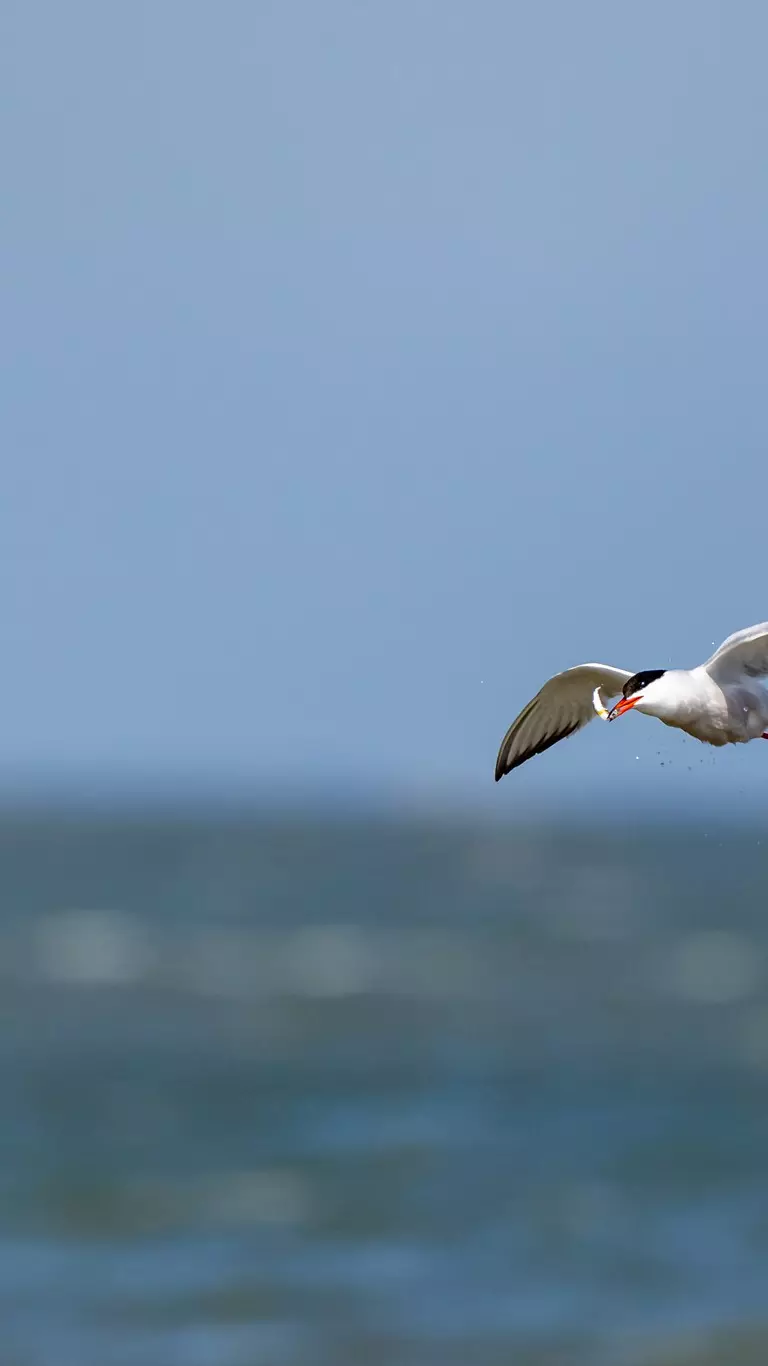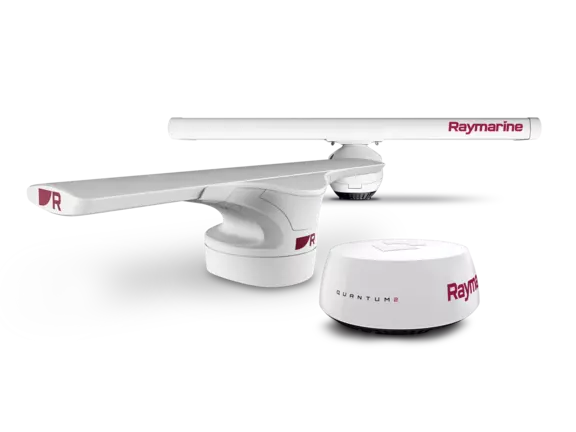
17 September 2024
Bird Mode on a Raymarine radar allows captains to identify sea birds in-flight at greater distances.
To be successful, experienced coastal fishermen have developed many different techniques to help them find likely schools of fish more quickly. Along with weather patterns, moon phases, tidal heights and current flows, nature offers anglers a great clue to the presence of feeding fish – in the form of bird activity.
Sea birds have developed incredibly sensitive eyesight over millions of years, which allows them to see baitfish clearly below the water surface. Anglers can make good use of their superior eyesight and vantage point, but only if the location of feeding birds in flight can be detected.
Under good conditions, sea birds are hard to see at any significant range. People with good eyesight can typically see them out to about ¾ of a mile, and maybe a bit more if the birds are larger or in a flock. Beyond ¾ of mile, binoculars or other electronic aids are required for locating sea birds.
That’s where Raymarine radar comes in. Using the Bird Mode function, available in select radar scanners, captains can identify sea birds in-flight at greater distances – often several miles away -- and use that information to locate the hottest fishing activity.
After all, if the birds are feeding on the bait from above, it’s a natural extension to believe that game fish are doing the same from below. Birds move differently to other targets and therefore appear differently on your radar screen. Learning to recognize what birds look like on your radar will allow you to find prime fishing spots that are too far away for the human eye to see.

(Bird Mode resets the radar gain, clutter and color palette settings to optimize the display of the birds. All of the light blue, blue-green and yellow speckle are individual birds or flocks. A large flock is dead head, behind the buoy and land.)
We spoke with Captain Terry Nugent, owner of Riptide Charters in Cape Cod, Massachusetts about his experiences finding birds with radar. Terry has perfected the “run and gun” fishing technique using his 12kW Magnum open-array radar scanner and his Axiom 2 XL chartplotter displays. “We’ve had great luck catching Bonito, False Albacore, and even Bluefin Tuna using the Raymarine radar to find the birds,” says Nugent. “Birds like gannets and terns are common in the coastal waters here, and easily identifiable on the radar.”
Terry switches the radar into bird mode, which automatically adapts the radar’s gain and sensitivity settings to make bird detection possible. “The flocks of birds are readily apparent on the radar. One of the key things I look for is the motion of the flock. When the cluster of bird targets is expanding, that tells me the birds are still on the hunt. When I see the flock contracting on the radar, I know they are on the fish and that’s the time to get moving in their direction.”
While the automatic bird mode settings are a great starting place, Terry has found some customized settings that work better for his needs. “On my Magnum radar I’ll normally run the Gain setting somewhere between 92 and 94 percent. You want to find that small line between when the radar is near its maximum sensitivity, but just below where it gets overwhelmed with noise” says Terry. “Birds are naturally poor targets, so the gain needs to be turned up to detect them. Unless it’s a rough day I’ll try to keep the sea clutter and rain clutter at Zero. The Magnum radars also have a setting called 'Power Boost’ which makes my 4-foot antenna behave like a larger radar antenna. I run the 'Power Boost' at 100%.”

(Terry Nugent, owner of Riptide Charters on Cape Cod, MA)
So, what does Terry look for on the radar screen? Terry says it’s all about looking for single and clustered targets in the bluish green to blue part of the color palette. It’s also helpful to know what kinds of birds frequent the area you’re fishing and how they typically behave. “Gulls are loaners and fly as singles, well-spaced out until one of them gets on the fish. Then their buddies all swoop in on the action. Being larger, the gulls are easier to see as singles on the radar.” Other species of birds behave differently and it’s valuable to observe them whenever you have the chance. “Another common bird here, Terns, fly and hunt in tight packs. Their radar signature is a bit more obvious because of this. You’ll see a cluster of small returns that constantly changes shape from sweep to sweep.

(The proof is in the pudding. Once under the flock, this was the view from Terry’s SideVision sonar. In this case a pack of Albies feasting on a school of peanut bunker.)
So, what kinds of radar systems are bird-capable? The answer is all of them. However, some birds have more favorable characteristics than others. With a bit of experimenting and observation, you can locate birds with just about any radar system. Here are a few tips if you’re considering what to buy:

(Birds around the Corner: Radar can even see birds blocked visually by land. Due to their high altitude between dives, Terry was able to spot feeding birds that were visually blocked by a large sand bluff.)
For a charter fishing captain, having many different tools at his disposal helps Terry greatly by giving him multiple strategies for finding fish and keeping his clients happy. “Sometimes you can sit on a very productive spot and then suddenly, it all stops. The fish are on the move. Being able to fire up the radar and spot the birds helps me to figure out where the school is headed. I can run out ahead of them and be ready with lines in the water when they arrive. That keeps the clients happy, smiling and coming back year after year.”

(Magnum radar is a great tool for finding sea birds, but with a little experimenting and observation, you can do it with just about any radar to some degree. Don’t be afraid to adjust your radar’s settings. High Gain, just below saturation, is the key.)

Discover the latest Raymarine radar systems and learn how radar can help you to improve your situational awareness, navigate safely and keep you on the fish.
Find out more